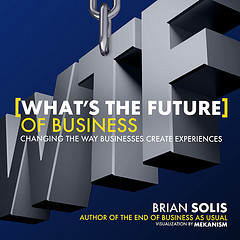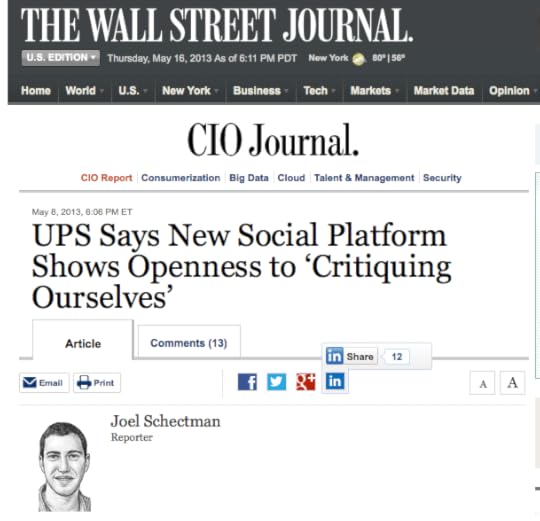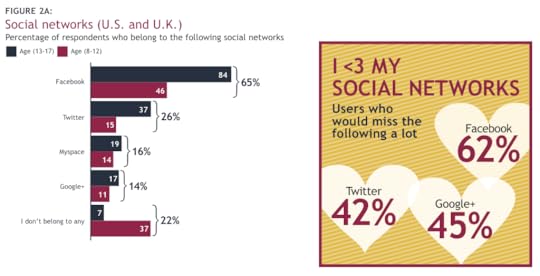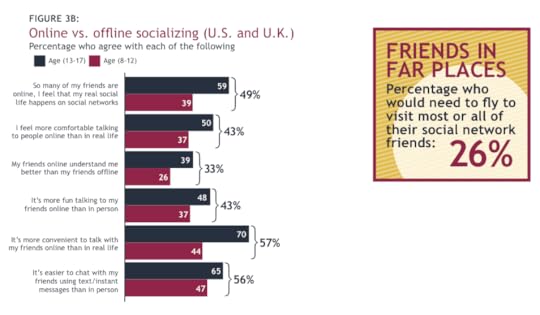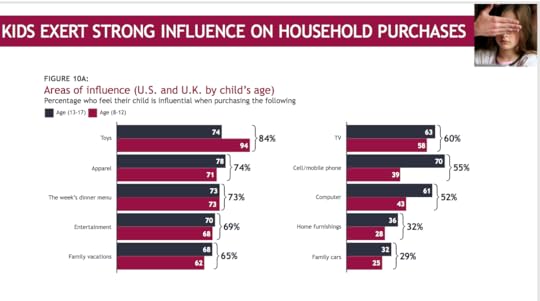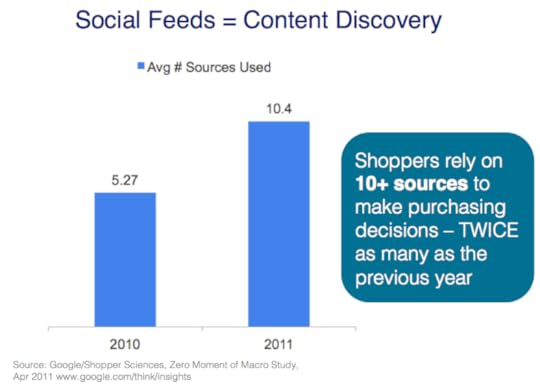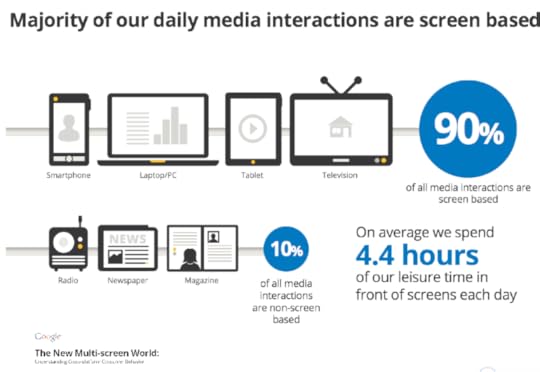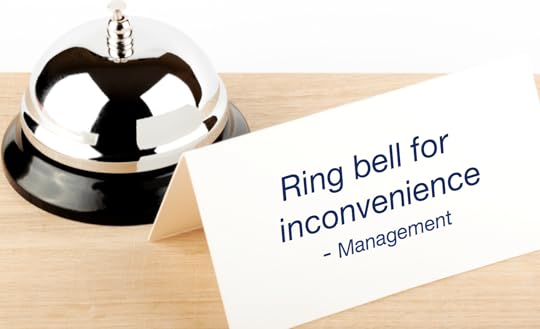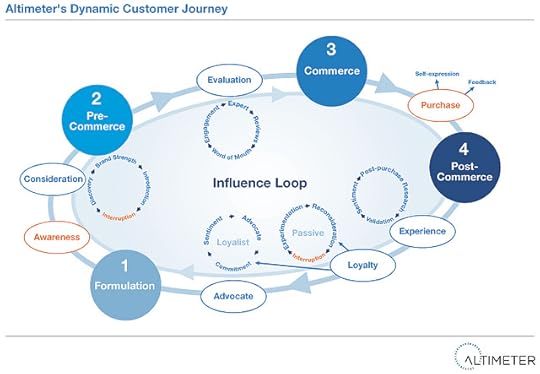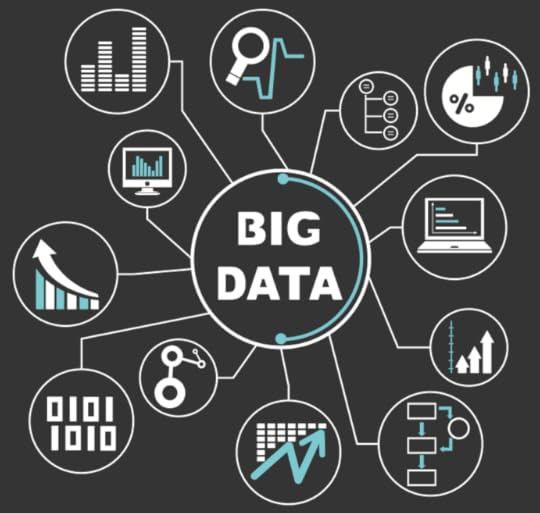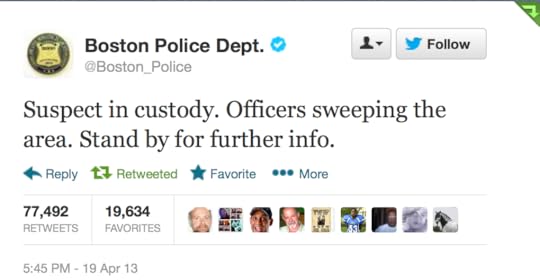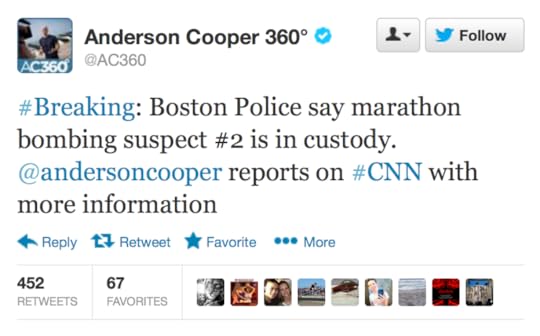Brian Solis's Blog, page 119
May 24, 2013
Be a Tool: Properly Resource Your Enterprise for Social Media
Guest post by Danna Vetter, VP, Consumer Strategies, ARAMARK
You’ve heard it all before. You do your research. You write the strategy. You set the goals and objectives. You train your community managers. You go live in two weeks.
Facebook announces Timeline.
You kick [insert EVERYTHING].
There is only one thing that can be done in situations such as these – control what you can control. As marketers, we have all come to rely on these external social platforms, of which we do not own, control, or lead. There is obviously a certain compromise that we all must accept in this new world – we don’t make the rules. It’s not our code. It’s not our functions. It’s not ours.
Welcome to Digital Marketing 2013.
But here’s what you can control – always preparing your organization. Give them the tools and resources they need to be successful in social media every single day.
Training is a fundamental part of getting your users ready for managing social media. But learning can’t end there. The industry evolves and changes too much. Education and knowledge need to be a continuous process. What they learned yesterday is already the past. And by continually providing the right tools and resources to your managers, you can ensure they are prepared in the best ways possible.
Get your team the technology to manage social media. At ARAMARK, we started with a social media management system (SMMS). This gave us a place to corral all of our company’s social accounts, and just as importantly, it gave our community managers a one-stop shop where they can manage multiple social channels and campaigns. They can schedule, publish, and track content, as well as measure analytics. Most SMMS providers now even have functionality for ads buys on Facebook as well as targeting your content’s audience and promoting your posts.
Also, we kept our social managers up to speed on the latest developments through topical resource guides, mini playbooks, and even infographics. Be creative. Collaborate. Communicate. Share knowledge. Hear what your team needs, what they want, and what they are missing. Then provide it back to them.
Learn from each other. If you don’t have an internal collaboration network, consider cloud versions like Yammer or Chatter. If your company wants to keep everything in-house, use email. Or pass notes. Maybe shout. Find anyway possible to share information and experiences. If you don’t have the answer for a community manager, maybe one of their peers does.
There’s so much out of our control today as marketers. But no matter what, at a company, you win and you lose together. So stay ahead of the game and keep your company prepared. And look out – Facebook just changed how people access and use newsfeed!
Part of an ongoing series…
They All Laughed – The Road to Becoming a Social Enterprise
The 5th P of Marketing is People – Engagement begins within
Mitigating Risk in Social Media Engagement
Follow Danna on Twitter
Image credit:

May 21, 2013
Getting Back to Basics: Why Brands are Getting it Wrong in Social Media
Question: What is your #1 advice for social media strategists and managers?
Answer: Stop talking about social media
Type “social media” into a Google search bar and you’ll find roughly about 4.7 billion results in .30 seconds. Next, try “social media conference.” You’ll see something along the lines of 1.2 billion results in .25 seconds. Social media is important but I’d argue we aren’t celebrating it for the reasons we should. Instead, we are forcing social media to conform to traditional thinking and processes rather than adapting business philosophies and supporting methodologies to meet new opportunities.
Every day, I hear about how social media strategists and managers are frustrated with the lack of executive support. Yet, many aren’t doing themselves any favors. Executives don’t speak the language of social media. They speak the language of the C-Suite and their audience are shareholders and stakeholders…not necessarily customers or employees or “people” in its most human sense.
So, in the face of skepticism or fear, the best advice that I can offer you is to learn the language of the C-Suite when making the case for what it is you believe is the right thing to do. Making the case for social media has less to do Facebook or Twitter or Likes, views or Retweets and more to do with using these networks to glean or introduce value. To earn the attention and respect of the C-Suite and ultimately customers is the ability to connect the dots to the very things that every stakeholder values and communicating it in a way that is approachable and appreciated.
This takes a thoughtful approach to rendering value in a contextual means that hits home with different people their way.
Altimeter colleague Charlene Li and I conducted a series of research interviews and surveys over the last year on this very topic…how social today’s social media strategies align (or do not align) with business goals. We shared our findings in a newly released report, “The Evolution of Social Business Six Stages of Social Media Transformation.” Needless to say, we found a significant gap And, it is this gap that makes communicating value to executives difficult if not impossible.
Charlene and I found that only 34% of businesses felt that their social strategy was connected to business outcomes and just 28% felt that they had a holistic approach to social media, where lines of business and business functions work together under a common vision. A mere 12% were confident they had a plan that looked beyond the next year. And, perhaps most astonishing was that only one half of companies surveyed said that top executives were “informed, engaged and aligned with their companies’ social strategy.”
In the early days of social media, emergent networks changed how people connect to one another and the information that’s important to them. With each update, shared experience, and event, the world shrank. People were and are becoming increasingly connected and as a result they are more informed. With information and connectedness comes the reality of increased customer expectations. Value, engagement, entertainment, personalization, people must takeaway something meaningful from the exchange otherwise there can be no relationship. A relationship is after all a mutual exchange where all parties believe that connectedness is beneficial.
Facebook, Twitter, Youtube and every network thereafter are merely communities, ecosystems, and platforms where information is exchanged and relationships are formed and abandoned. How you make the case for engagement and how to deliver or extract value isn’t directly tied to the nature of the environment as much as it is the facilitator of the way and the weight that value is defined, expressed, and measured.
If we’re not providing solutions we may in fact be contributing to the problem. See, social technology isn’t the answer; it’s part of the answer. Yet social strategists are often caught up in a socialized ecosystem of catch-up and that’s part of the challenge and the test. There’s always going to be a new network or another shiny object. There are always new case studies or expert theories flooding blogs, conferences, and books.
Again, the best advice I can give you is to stop talking about social media as a means to an end and start thinking about how social media becomes a means toward triggering meaningful activities or outcomes that align with business priorities or objectives and customer expectations.
This is the time to get back to basics. This is the time to take a step back.
Social media is not the crux of you argument. It is an enabler. This is your opportunity to lift the conversation from tools to value and to translate the promise and opportunity of social into an emissary of meaningful engagement that aligns business goal, social media strategies and customer value.
The story continues…
Connect with me: Twitter | LinkedIn | Facebook | Google+ |Youtube
This post originally appeared at AT&T’s Networking Exchange
Back to Basics:

May 17, 2013
Internal social networks improve communication + collaboration when empowered to do so
I received an email from my friend at CIO Journal just as I boarded a United flight from Mexico City to San Francisco. He was on deadline and the topic was too good to miss. I’ve spent more than a fair amount of time studying and reporting on the social landscape as it pertained to internal engagement, communication and collaboration.
I frantically typed on my iPhone with my thumbs before the door closed. Time was.running.out. With the hit of the send button, the door closed, and I was relieved to know that I made the deadline. Fast forward….the article recently ran in WSJ’s CIO Journal with a few of my thoughts. Since the topic is important to me and hopefully you as well, I wanted to share the response in its entirety. I’d also love to hear your thoughts on the subject…
Here’s the setup (edited):
A company has rolled out a new social media platform to its employees in the hopes of improving its health and safety record by getting workers to talk about best practices and also to point out problems or things that need to be done differently.
Question 1:
Is it unusual for companies to introduce a social media platform to fix this type of problem (versus trying to foster more collaboration for business processes)?
Answer:
Research shows that when a majority of the employee workforce is “disengaged,” it’s due to the reality that a lack of leadership or belief in overall corporate purpose or direction is prevalent. Social + gamification without uncovering and fixing employee relationships is simply gaming the system. However, social + gamification combined with an overhaul in process, management, and communication is how to bring about true change. Without investing in the culture, most initiatives are short lived and often minimizing the problem.
As my good friend and digital sociologist Stowe Boyd would say, “The tangible result of culture change is behavioral change.” The opposite is also true. This is why management needs to explore its DNA to give employees something to align with.
Question 2:
Is adoption of enterprise social media a challenge. particularly when there is distrust of management?
Answer:
A recent Altimeter Group study published by Charlene Li found that businesses that employ enterprise social networks without a true vision for collaboration or how to improve relationships often fail to meet expectations. Also, without leadership adoption, it’s impossible to lead by example.
Hope this helps.
Join me as the story continues…#WTF
Connect with me: Twitter | LinkedIn | Facebook | Google+ |Youtube

May 14, 2013
New Digital Influencers: The Coming Youthquake
Elements of inspiration that went on to become my new book, What’s the Future of Business, Changing the Way Businesses Create Experiences
Blame it on the youth they say. Indeed, there’s a great assumption that the future of technology falls in the hands of emergent generations. The youth of today will someday represent the majority of consumers, employees and citizens. That’s always the case, but what we don’t yet fully appreciate is just how different young adults think today. We don’t yet understand what it is they value and why. We’ve not yet assimilated how they make decisions and what factors influence their daily activities and journeys.
Generation Y, also referred to as Millennials, and Generation Z represent those individuals born in the late 1970s or the early 1980s to the early 2000s. They follow Generation X, my generation, and they are already a powerful force in the future of the global economy and politics.
70 million people in the U.S. belong to the Millennial Generation aka Millennials today. Millennials also represent 35 percent of the workforce today, and by 2014, they will comprise of almost half of all employed professionals. In a separate study conducted by Millennial Branding, it is expected that by 2025, Generation Y will represent 75 percent of the workforce.
Right behind them is Generation Z. And as they grow up, they too will have a profound impact on society. In fact, they already do. In the United States, Generation Z is said to already control up to $30 billion in spending.
What’s different about these generations than those before them? Gen Y and Z were born with digital in their DNA. While that may seem like a given, it is the very detail that separates them from their parents, teachers, businesses, governments, and any organization other than those already run by Gen Y and Z. As a result, our society splits into two camps, those who “get” these connected generations and those who do not or will not.
Your Experience is Not Their Experience
I’ve studied connected behavior for many years now. And it never ceases to amaze me how older generations refuse to see the world any other way than through their perspective. It’s almost as if there’s a superior and inferior right to certain life experiences. Yes, to ignore our own experience and point of view is a personal strength. But when considering the vantage points of Generation Y and Z, it is also a potential weakness.
For each decision we make in life, we bring an abundance of life lessons that help us choose what we believe the right path at every personal and professional intersection we encounter. But we are not qualified or truly experienced for that matter to assume that how we make decisions and how younger generations make decisions are in parallel. And, we cannot assume however, that as we design products, services, or any agenda for that matter, that Gen Y and Z will appreciate those outcomes as we seem the. The reality is that they already see the world differently than you and me.
Perspective is a gift nowadays. It’s in how we see the world through their eyes that we can then invest in the future of their experiences.
Why?
They will not do the same for us…at least not yet.
Some of us can multitask, but we say our ability to do so diminishes each of the tasks we simultaneously perform. This is not true for younger generations as their brains are wired differently.
We complain about privacy in social networks. They’ve mastered it.
We don’t get why people share as much as they do online. They’ve created incredible filters to sort through the noise.
We use Google.com to find relevant information but younger Generations go to trusted networks or rely on YouTube videos to make decisions.
We watch TV on televisions. They watch TV on tablets and smartphones
We listen to radios on radios. They listen to music on Pandora, Spotify and the like.
We can eat dinner or sit in the same room with loved ones without looking at our phones and we get angry when others don’t return the favor.
We trust family and friends and younger generations trust people “like” them whether they know them or not.
This is just the beginning…
Empathy is the Gift worth Getting: Seeing the World Differently
Look, getting older doesn’t mean we have to become irrelevant. Assuming that the way we live is the only way to live is incredibly presumptuous. Young adults started life differently than us. What they know is what they know. You and I had to learn how to evolve from analog to digital and we’re still learning. But the gap that separates us and them is bridged only by our ability to take the first step toward understanding their behavior, expectations, and preferences. Then and only then can we build a more connected world and chart a better course for the future of education, commerce, government, art, and everything that keeps society and humanity moving forward in positive and productive ways.
In a study of young adults in the US and UK conducted by JWT entitled “GEN Z: Digital in their DNA,” we learn just how connected they are and how different they are from us.
When some of us wonder whether or not Facebook will follow the way of MySpace and all the other social networks that succumbed to digital irrelevance, we can see that for those 13-17 and 8-12, Facebook is the online homebase for 84% and 46% of younger generations respectively.
For those who question whether or not kids who focus on their screens are having an affect on conversations in the real world, be warned. Times, they are a changin’. In the study, almost half of Generation Z expressed that they feel their real social life happens on social networks. And, 43% in aggregate feel more comfortable talking to people online than in real life.
Online relationships are also making the world a much smaller place. This is true for all those connected online however. But for 26% of such a young demographic to say that they would have to board a plane to visit their online friends is exceptional and practically unprecedented.
And when you ask Gen Z parents how they feel about their children’s online behavior, 68% wish they would log off and engage more with the real world. But that’s just a digital fantasy it seems as younger adults are already affecting how households make important purchases.
73% influence this week’s dinner menu.
69% influence entertainment.
60% influence TV.
The list goes on…
Born Digital
What’s clear is that Generation Y and Z are born digital and therefore engagement strategies, products, services, and employee relations need to also be born digital to meet expectations. If you think you’re placating or giving into this generation whines or unfounded demands, think again. This is just a way of life for them and any organization or decision maker that doesn’t understand them cannot with any meaningful effect engage them or earn relevance among them. But think for a moment what this means.
These younger generations aren’t the only one who are becoming incredibly connected. Anyone who throws themselves into the digital lifestyle start to exhibit different but eerily similar behavior to that of their more youthful counterparts. iPads or Droid tablets, smartphones, laptops, Nike Fuelbands, FitBits and other personal devices, social networks, connected devices, collectively contribute to an always-on society. The result, people are not only connected, they’re informed, empowered, and discerning. This means that they are also either elusive or immune to traditional marketing messages in traditional marketing channels.
According to a Google Insights macro study exploring the “Zero Moment of Truth,” today’s shoppers now rely on over 10 sources when making purchase decisions. This is twice as many as the previous year. The more society embraces the digital lifestyle the more likely this is to go up.
We’re moving from a world that prefers “screen face” to face-to-face engagement and it knows no geographic or demographic boundaries. In a separate Google report, “The New Multiscreen World,” it the extent of cross platform, cross screen consumer behavior among connected consumers was revealed. Google found that we are indeed becoming a society of multi-taskers and multi-screeners with consumers spending an average of 4.4 hours of leisure time across four screens every day. Those screens include smartphones, laptops, tablets and TVs. The study also found that only 10% of all media interactions are non-screen based, which include radio, newspapers and magazines. Wow.
What’s clear is that Millennials and Generation Z behind them are in fact born digital. To get them takes effort. And, to keep up with younger generations takes a shift from antagonism or skepticism to that of comprehension. Understanding how they connect, why, and how doing so influences online and real world behavior, we can make informed decisions about how to develop relevant engagement strategies and meaningful products and services.
Essentially we must become digital anthropologists and ethnographers to learn and appreciate the differences and subtle nuances that create a great divide among living generations. Doing so teaches us about current culture but also conditions us to better anticipate change. This is important as technology is only accelerating therefore making change a constant.
As we learn more about these digital natives, chances are that we too, might very well become the people we’re trying to reach. What we cannot do however, is underestimate the influence of these connected generations on economy or society. They, and those who learn how to connect with them, contribute to a culture that’s not only digitally literate but also interconnected. Perhaps soon, we will not be so different after all.
Join me as the story continues…#WTF
Connect with me: Twitter | LinkedIn | Facebook | Google+ |Youtube
Image Credit: Intel, “How computers are born”

May 9, 2013
Part 2: The Broken Link of Social Customer Service
Part Two. An edited excerpt of What’s the Future of Business, Changing the Way Businesses Create Experiences
In Part 1 of this series, The First Mile: The Broken Link of Social Media Customer Service, we reviewed the opportunities and challenges that face any business seeking to engage customers in social networks. To become customer-centric requires a culture that supports customer-centricity and an active investment in defining the first mile experience.
The first mile of customer engagement is a post-commerce or post-transaction strategy that invests in an ongoing experience to keep customers happy now and over time. Doing so sparks positive word of mouth and in turn influences decisions the dynamic customer journey that defines the new era of connected consumerism. If in fact getting closer to customers is a key objective, then why do many businesses neglect the first mile of customer experience?
In February 2012, American Express published a report that found 46% of U.S. internet users stormed branded social media presences to express frustration about poor experiences.
In the American Express study, the results were as telling as they were indicative of how much work it’s actually going to take to transform customer experiences. For the most part, brands miss a majority of activity in the social web whether it’s good or bad. But, if you break it out to the most common engagement opportunities, companies will need to rethink the overall social media strategy and allocation of resources. Social media marketing is just the beginning. Customers aren’t on popular social networks because they’re looking to be entertained by their favorite brands. They’re online to seek and share experiences.
Take a look at these numbers for example…
50% – The number of customers seeking an actual response from a company about a service issue.
48% – The percentage of people who praise a company for delivering great service or experience.
47% – The influence factor of your customers who share information about service and experiences with a wider audience.
46% – Those who vent frustration about a poor service or experience.
43% – The amount of customers asking others how to have better experiences.
Rejoining the links
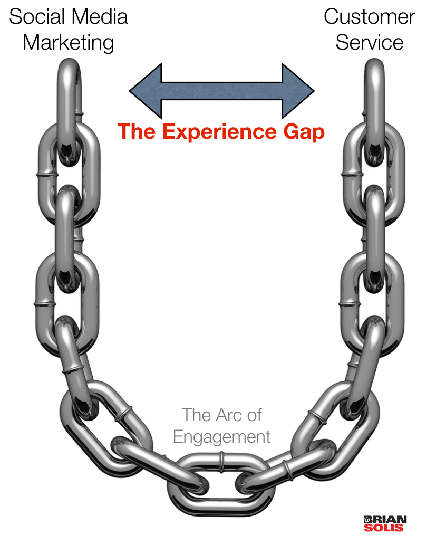
If people are acting as either an extended and connected sales force, marketing team or as detractors, perhaps a reset in priority is necessary.
When you look at how social media is supported inside the organization, you find that there’s a broken link between social media marketing and customer service. In fact, the majority of time, money and resources are invested in marketing and not in supporting customers through influential social networks.
If a customer shares an experience or asks a question the ability for marketing to acknowledge the act is certainly there. The trouble is that most of the time, the person or team in front of most social presences cannot effectively respond with any form of resolution or satisfaction. Nor is there an internal process or technology platform that connects outside activity through social marketing to customer service and back out again. This leads to a phenomenon that I call the Broken Link of Customer Engagement or the Social Arc Effect.
Let customers own their experience
Just because a company does not have a dedicated presence for customer service on social networks doesn’t mean that customers understand the difference. To everyday consumers, a Facebook page or a Twitter handle is the brand. Customers do not see silos, they see one company. It’s up to the social media team to connect the dots instead of lock social in a silo of its own.
Customer-centricity starts with recognizing that customer experiences are in fact owned by the customer. As much as we attempt to integrate experiences into product features and design, the ultimate experience unfolds at the point of outreach. In social media, most activity is run out of the marketing department. As a result, when a customer expresses discontent, praise, or simply requires direction on the social presences of any brand, it is initially received by the community manager or the representative agency/consultant.
The lost art of following up
Depending on internal processes and connectedness, chances are that customer sentiment will pass the first point of entry, but according to statistics, customer needs will become the victim a siloed enterprise. In reality, marketing doesn’t talk to customer service and customer service, without design, doesn’t recognize conversations and expressions en masse.

In a study conducted by Satmetrix in mid-2012, it was revealed that less than half of the companies it surveyed tracked and followed up on customer feedback in social media. An astonishing 28% do not track or respond leaving customers to question their value to the businesses that they support. The lack of acknowledgment or engagement also leaves the door wide open to competitive courtship.
Linking social media to improve experiences
In 2007, I wrote a piece on how social media presented an opportunity to turn customer service into the new marketing. I believe that acquisition in social media is only part of the story. The brilliance of social networks is that it presents opportunities for engagement to transform negative experiences into positive outcomes. Conversations also inspire opportunities for product refinement or innovation to create remarkable experiences from the onset.
Retention is the new acquisition. For the companies that are experimenting with social media, it’s time to break it out of the traditional call center and create a proactive group of expert agents. While social media is yet another channel for agents to engage customers such as chat, email, and phones, the reality is that it requires a different philosophy to effectively manage relationships and agent performance.
Time to resolution, cost per engagement, NPS, wait time, these are metrics of an aging era. Advocacy, referrals, positive endorsements, reviews, loyalty, these are the metrics that can be directly linked to social customer service among many other tangible outcomes including ROI.
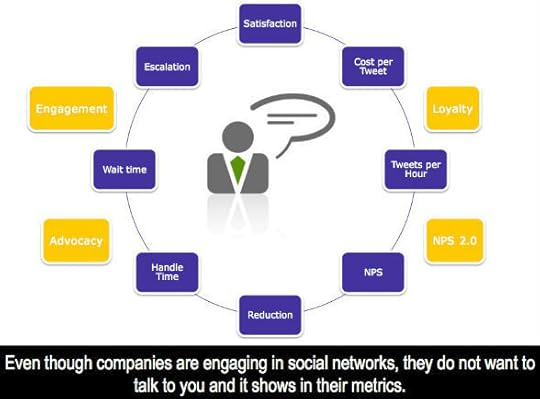
Unlocking advocacy
The first mile of customer satisfaction starts with reflection and introspection. To become customer-centric requires a change in how we value customers and the role they play in the decision making cycles of those who make choices based on the shared experiences of others. The first mile is then paved through listening, governance, and engagement.
The Arc Effect is a visual representation of what is and what could be. Completing the arc should become a 2013 priority investment for any business genuinely pursuing customer-centricity. It takes good intentions of course, but to truly improve relationships and unlock advocacy requires that social media strategists work with customer strategists to create an integrated series of processes and defined roles and responsibilities. Doing so delivers a holistic experience that turns customers into stakeholders and stakeholders into protagonists of aspirational experiences.
ctrl-alt-del
The story continues…#WTF
Connect with me: Twitter | LinkedIn | Facebook | Google+ |Youtube
Photo Credit: Shutterstock
This post is based on a piece I wrote for AT&T’s Networking Exchange

May 7, 2013
The First Mile: The Broken Link of Social Media Customer Service

Part One. An edited excerpt of What’s the Future of Business, Changing the Way Businesses Create Experiences
For all that social media is doing to change business for the better, it’s not yet enough. Interview any executive and ask them what their priority business goals are for 2013 and I’m sure you’ll see some element of customer-centricity on the list. Yet the challenge that exists for any organization trying to get closer to customers lies in the definition of customer-centricity. If getting closer to customers is a key objective, why do many businesses neglect the first mile of customer experience? Sure products and services count for almost everything. But if and when a customer has a question, wishes to share ideas or provide feedback, or needs help, why is it often the beginning of buyer’s remorse or resentment?
Over the years, companies invested in automated solutions to improve the efficiency of inbound customer engagement. Sophisticated voice recognition systems alleviate the hardship of pushing a button to direct calls. Improved call transferring lessens the frequency of getting dropped. Web forms, click to talk applets, and email now ensure that the first round of automated replies you receive look more human than ever before. And, internal metrics are now designed to reduce the amount of time we can get our issues resolved, reducing the need to build comfort, confidence and trust in each call. No, I’m not serious. But this is the reality that a majority of human beings experience to attain satisfaction or resolution.
The Customer is Always Right—Right Now
Enter social media. Customers no longer require a “hotline” to express sentiment nor do they need approval to do so. Everyday people express themselves through every channel possible. You’ve heard it before. A happy customer tells a few people, but an unhappy customer tells…everyone. Thanks to Twitter, Facebook, YouTube, Yelp, blogs, Foursquare and a myriad of other social networks, customers now possess the ability to share their experiences and affect the impressions and ultimately decisions of an unprecedented number of peers each and every day.
If you’re reading this, you probably already get this. Yet, still today, almost seven years after the inauguration of the social media movement we know today, there’s still a disconnect between the importance of social networks and customer expressions and the ability for executives to appreciate the affect and the consequences of not engaging. It’s the difference between the function of customer service and the intentional result of customer satisfaction.
In the realm of social media however, every comment either compliments or peels away from the sanctimony of an engineered brand. And, if the formula of happy customers telling a few and unhappy customers telling many more holds true, the collective of customer experiences are indeed indexed for others to find and consider in their decision making cycle. One must not need be a mathematician to understand that when someone searches about your company, chances are that without engagement or design, posts, comments and real-time conversations will work against you. In February 2012, American Express published a report that found 46% of US internet users stormed branded social media presences to express frustration about poor experiences.
Imagine considering a series of brands related to a product category you’re investigating. In the first round of research, you find a series of posts, videos, and conversations that reveal negative experiences and the inability for the company to positively change opinions. Chances are that you’ll react accordingly.
In Part 2 of this series, we’ll discuss the disconnect between social media marketing and social customer service within the organization. We’ll also take a look at how the majority of time, money and resources are invested in marketing campaigns and not in supporting customers. If customer retention is the new acquisition, a shift in the balance of marketing and support is desperately required.
The story continues…#WTF
Connect with me: Twitter | LinkedIn | Facebook | Google+ |Youtube
Photo Credit: Shutterstock
This post is based on a piece I wrote for AT&T’s Networking Exchange

April 29, 2013
The Imminent Shift from Social to Digital Engagement
How do you define engagement?
No matter how you define it, engagement is something that we most likely underestimate. Engagement symbolizes the touches that occur in various moments of truth and this should completely change not only how you engage someone in each moment but also how the inside of your company works with one another to make it frictionless and experiential.
Whether a customer stands on the stage of awareness, consideration, purchase, or post purchase, touch points open and close. And, it is in those moments that engagement, regardless of source or shape, affects the next steps and impressions of customers.
These moments of truth however are not limited to any one channel. Whether customers are navigating social, mobile, web or IRL (in real life), they approach each stage of the journey with different needs, in varying stages of decision making, and with one of several frames of mind depending on the context of engagement and also the screen (smartphone, PC, tablet, TV, etc) they’re using in each moment. It’s becoming increasingly complex, but then again so is the path of consumer decision-making. That’s why I wrote WTF, What’s the Future of Business…someone had to tell the story of the new customer journey, their way points, and how to reach them. The answers revealed that social was only part of the adventure.
The image above represents a detailed customer journey map, which outlines the important steps your connected customers take during and following decision making. The map also introduces the diverse elements that factor in to each step. Perhaps more importantly are the channels and screens individuals use to make their way along the journey. Mobile, social, web, IRL, they each contribute to a customer experience that either helps or prevents them from moving along in your favor.
In my research I’ve found that more often than not, each stage of the customer journey along with the mixed channels that they use are defined or programmed by different groups within the organization. The social experience is developed independently of the mobile experience, which is disconnected from the web experience. The point is that customers only see one brand or business and therefore each channel should complement one another to deliver against a desired experience and journey optimized for the moments of truth and for the context of each screen.
The Expansion from Social to Digital Engagement
One of the ways I’ve defined “engagement” over the years was quite simple, when a business and consumer interact within their channel of relevance during various moments of truth. Engagement though, is then measured by the actions, sentiment, and outcomes that result from each interaction. To optimize results, experiences, click paths, outcomes, and sentiment must be defined and enlivened through each channel in each moment. To do so takes vision, articulation of that vision, and collaboration with all stakeholder groups to cast a unified approach. Yes. It’s the age-old argument of bringing down silos and opening doors between departments and groups that just don’t talk to each other right now. But, that’s just what needs to happen and the more progressive companies are already taking note.
One such company is one that you’re more than familiar with. Starbucks recently appointed Adam Brotman, former senior vice president of Starbucks Digital Ventures, was appointed to an entirely new executive role, chief digital officer. The CDO role assumes all of Starbuck’s digital projects, which includes web, mobile, social media, digital marketing, Starbucks Card and loyalty, e-commerce, Wi-Fi, Starbucks Digital Network, and emerging in-store technologies.
Sephora is another forward thinking company that is uniting disparate channel strategies and various customer journeys in the name of holistic experiences. Sephora recently underwent a makeover to define the ideal customer experience and how it would play out in digital and real world channels, including in store engagement, while complementing and optimizing one another.
Perhaps a Chief Digital Officer is just the beginning. What we’re really talking about is someone who can bridge marketing, sales, service, and technology to create a frictionless path between customers and the business…at every step of the journey. Perhaps it’s time to think about escalating the role to someone who can own the entire customer lifecycle and bring the people within the organization together to do it. To break down walls, someone must be able to show how and why everyone can and should work together and also what’s in it for them. It would take someone who isn’t tied to any one function but instead someone who has everybody’s best interest inside and outside the organization to redefine the experience and how it’s formed and sustained. As I write this, I imagine someone taking over the role of customer journey management for digital, social, mobile and IRL.
The digital lifestyle is just a way of life now and businesses that don’t think beyond social or traditional will miss the greater opportunity to lead desirable customer journeys, experiences and outcomes. Take one more look at the Dynamic Customer Journey. As you plan for 2013 social, mobile, digital, and other channel strategies, consider how each can converge into a reciprocal and congruous ecosystem. The future of customer experiences lies in experience design and more importantly, customer journey mapping…across the screens and IRL.
Welcome to a new world of customer journey management (CJM) and the ability to bring people together around a common vision for improving customer experiences, sentiment and relationships.
The story continues…
Connect with me: Twitter | LinkedIn | Facebook | Google+ |Youtube
Photo Credit: Shutterstock
This post is based on a piece I wrote for AT&T’s Networking Exchange

April 24, 2013
Without Analytics, Big Data is Just Noise
Guest post by Eric Schwartzman, founder and CEO of Comply Socially, which helps employers manage the risk and capitalize on the opportunities of social media in the workplace. Follow him on Twitter @EricSchwartzman
The online Boston Marathon bombing witch-hunt last week dragged social media down to a new low.
Social media has become “the cocktail party from hell,” writes Maureen Down in her column “…with the flood of information jeopardizing meaning.”
When everyone’s talking about a crisis in real time and you have unlimited access to what they’re saying, the wisdom of the crowd can be very hard to find. With so much information swirling around, looking for meaning manually is impossible because there are never enough people to consider everything out there at once.
“What happened to Sunil Tripathi’s family scares the hell out of me, and I feel that any sort of crowd crimesolving platform needs to take that into account–the risk of lives being disturbed by overenthusiastic sleuths is just as important, in my opinion, as the potential for solving unsolved crimes,” says Neal Ungerleider, who wrote about how Reddit became a hub for a crowdsourced Boston Marathon bombing investigation.
Like most of the other social networks overflowing with new posts every millisecond, Reddit lacks even the most basic analytics. According to another story by the AFP, Reddit uses Google Analytics to monitor their own traffic.
We need to take a moment to acknowledge the critical importance of being able to find trends and credible sources in big data. When Google Reader goes away on July 1, 2013, not a single alternative offers in-feed search or analytics, and nobody seems too concerned about. In my book, that’s totally crazy. Without the ability to drill down and analyze your feeds, all that news is just a bunch of noise.
At what point does it become irresponsible to provide the world with access to a communications tools that can literally reap havoc in the lives of individuals and companies without providing any visibility at all into the patterns and shapes of the content being shared?
Is a social network without integrated analytics like a vehicle without a safety belt?
Freddy Mini, CEO at Netvibes — a Google Reader alternative that’s more focused on providing insights than powering engagement — says, “Context is the comparison of metrics.”
Meaning comes from the intersection of multiple sources. In the old days, journalists triangulated truth against a handful of sources. Today, we need to triangulate truth against millions of sources.
An avalanche of information is not necessarily a good thing. More often than not, it’s a path to obfuscation rather than enlightenment, where speculation inflicts irrevocable harm and sensationalism travels farther and faster than tolerance.
If you’re a business, the takeaway is that sharing without analytics is essentially useless, that engagement is not as valuable as insight, and that seeing things in context is more important than being popular.
Image Credit: Shutterstock

April 21, 2013
TNN (Twitter News Network) Trumps CNN….Again
Like many, I found myself gripped by the real-time reports that poured in on the evening of April 19th…Boston Police were in close pursuit of the second Boston Marathon bombing suspect. Up to this point, I mostly followed the story via @CNN and CNNLive. I noticed however, that some of the most interesting updates were shared via Twitter directly by the Boston Police (@Boston_Police).
As police surrounded the second suspect while he hid in a recreational boat in the backyard of a home in Watertown, I shifted from online to TV. Yes…my phone was nearby and it was in fact my second screen. I tuned in to Anderson Cooper on CNN to witness the apprehension as it happened.
Cooper cut to a report from a CNN field correspondent, who shared unconfirmed cheers among local residents. In that moment, I saw a Tweet come through on my phone from @Boston_Police, “Suspect in custody. Officers sweeping the area. Stand by for further info.”
Just then, something truly significant had occurred. Once again, we were reminded that…News no longer breaks, it Tweets.
Anderson Cooper then asked the reporter to hold on as he looked down at his phone and on live television, shared with the world, that Boston Police had confirmed that the suspect was in fact in custody…via a Tweet on Twitter.
TNN, the Twitter News Network is a powerful thing. In real-time, people create an incredible information network that expedites awareness. While it also raises the need for real-time fact checking, the information divide that Twitter introduces between citizen media and mainstream journalism is notable and game-changing.
Here, the Boston Police broke the story via Twitter and essentially informed and scooped traditional media in the process.
We do in fact live in interesting, and tweetable, times…
Connect with me: Twitter | LinkedIn | Facebook | Google+ |Youtube

April 20, 2013
It’s The End of Business as Usual in Japan
I’m so excited. As I type, I’m moments away from heading to SFO to visit Tokyo for the first time in years…
Shortly before the official launch of What’s the Future of Business, I spent several weeks writing new chapters for The End of Business as Usual.
Why?
I’m proud to announce that it’s finally the End of Business as Usual in in Japan!
The new book features new content specific to the Japanese economy. But that’s not all. It also has received a new title and cover design.
Introducing… エフェクト = EFFECT
Mr. Natsuno, a board member of Nico Video and professor at Keio University contributed a special message at the beginning of the book. Thank you Mr. Natsuno…
There will be a special presentation and press conference to celebrate the occasion. The event will take place in Tokyo at the Place Hotel, 1-1-1 Marunouchi, Chiyoda-ku.
The book is also available now on Amazon.
I would very much like to thank Hide Hashizume and Eiko Hashizume for all of their work and support over the last year on the book and this event. Also, thank you to Mr. Kanayama for his work in translating the book. It’s more than exciting to finally have completed エフェクト and to have the privilege of bringing it to Japan personally.
ありがとう
Arigatō
#EFFECT




